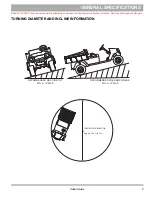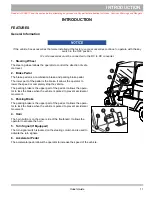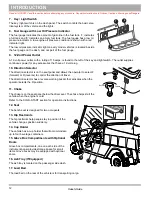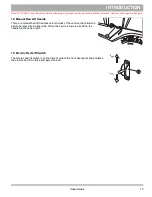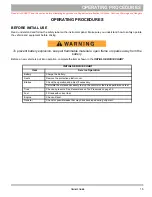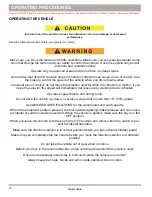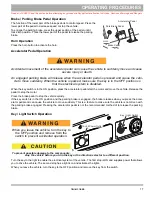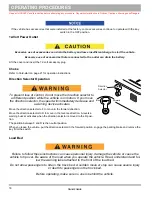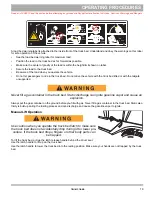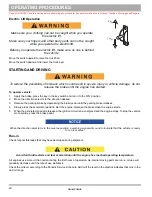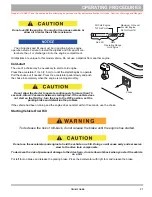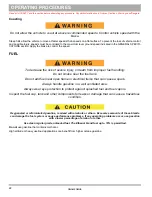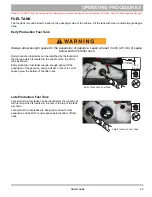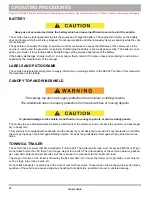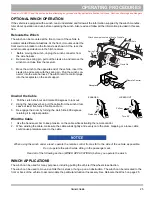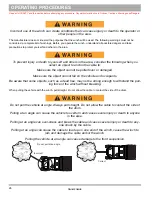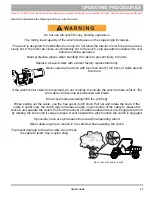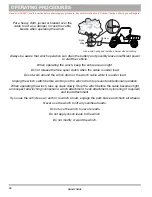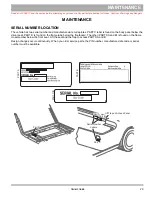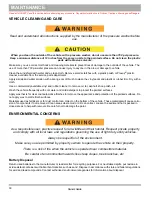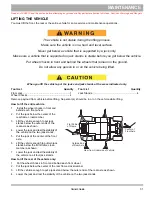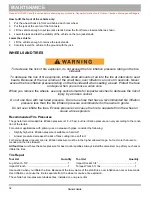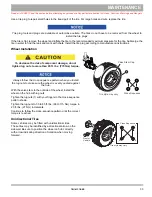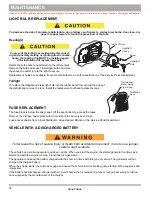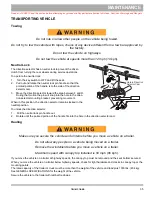
B
20
OPERATING PROCEDURES
Read all of SAFETY and this section before attempting any procedure. Pay particular attention to Notices, Cautions, Warnings and Dangers.
Owner’s Guide
Electric Lift Operation
Make sure your clothing can not be caught while you operate
the electric lift.
Make sure your fingers and other body parts can not be caught
while you operate the electric lift.
Before you operate the electric lift, make sure no one is behind
the vehicle.
Move the switch upward to raise the truck bed.
Move the switch downward to lower the truck bed.
STARTING AND DRIVING
To reduce the possibility of roll-back which could result in severe injury or vehicle damage, do not
release the brake until the engine has started.
To operate vehicle:
1.
Apply the brake, place the key in the key switch and turn it to the ‘ON’ position.
2.
Move the direction selector to the direction desired.
3.
Release the parking brake by depressing the brake pedal until the parking brake releases.
4.
Slowly press the accelerator pedal to start the engine. Release the brake when the engine starts.
5.
When the accelerator pedal is released, the ignition circuit is de-energized and the engine stops. To stop the vehicle
more quickly, press the brake pedal.
When the direction selector is in the reverse position, a warning signal will sound to indicate that the vehicle is ready
to run in reverse.
Run-in
Check for possible leaks that may have developed during shipment.
Avoid full throttle starts and fast acceleration until the engine has reached operating temperature.
All engines use more oil than normal during the first hours of operation. As internal moving parts are run-in, oil use will
gradually decrease until the rate of use stabilizes.
Check the oil level according to the Periodic Service Schedule. Add oil if the level on the dipstick indicates that oil is in the
add oil range.
Raise
Lower




